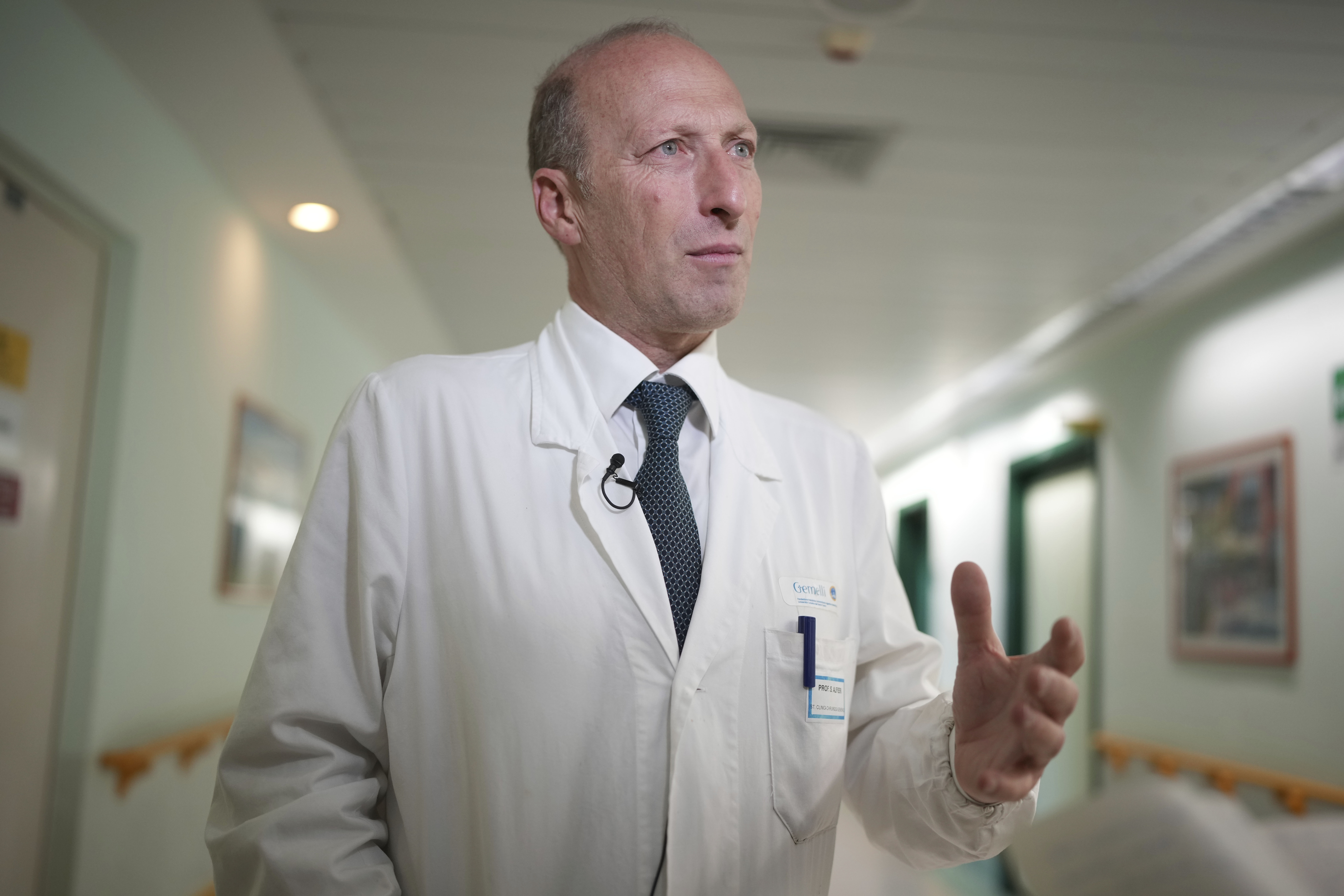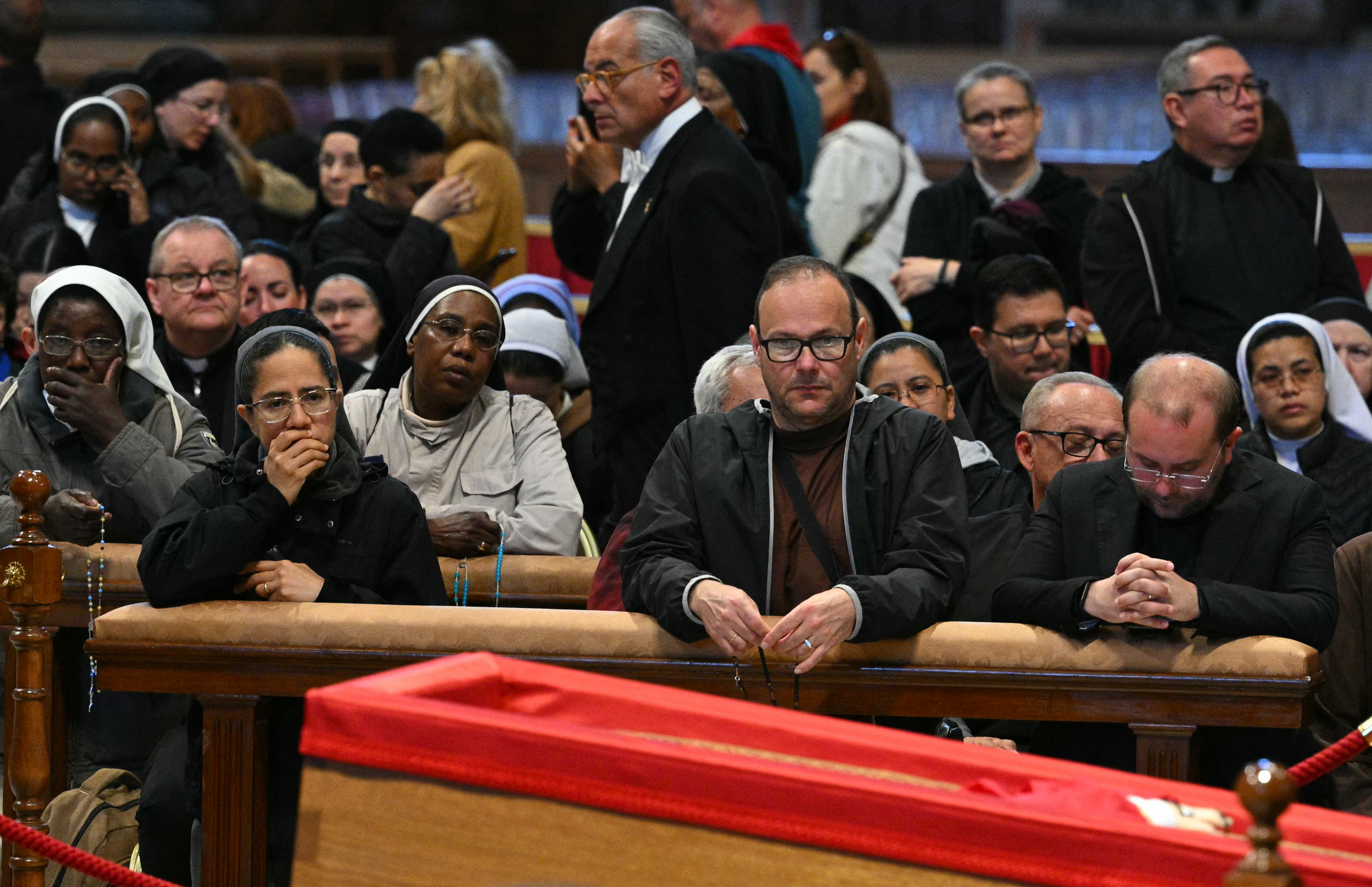Pope Francis's Death: Doctor Reveals Peaceful Final Moments
Pope Francis' Peaceful Passing: Inside His Final Moments at Home
Introduction: A Gentle Farewell to the Pontiff
The world mourns the loss of Pope Francis, a figure who touched the lives of millions with his message of compassion and reform. While the news of his passing has resonated globally, details surrounding his final moments have emerged, painting a picture of a peaceful end at his Vatican residence. Dr. Sergio Alfieri, the Pope's trusted physician, has shared insights into those last hours, revealing a scene of quiet dignity and a departure "without suffering, at home." Let's delve into what we know about the Pontiff's final day and the medical care he received.
The Doctor's Account: A Call in the Early Hours
Dr. Alfieri's account, given in interviews with Italian newspapers, paints a vivid picture of the morning that would mark the end of Pope Francis's earthly journey. He described receiving an urgent call at 5:30 a.m. from Massimiliano Strappetti, the Pope's dedicated health care assistant. Strappetti's message was clear: Pope Francis had taken ill and needed immediate medical attention. Imagine the doctor's urgency as he rushed to the Vatican, knowing the gravity of the situation.
A Race Against Time: Reaching the Vatican
Dr. Alfieri told Corriere della Sera that he arrived at the Vatican just 20 minutes after receiving the call. Those minutes must have felt like an eternity. It highlights the importance of having a responsive and dedicated medical team when dealing with a patient of such prominence and age. What measures were taken during that crucial time to assess and stabilize the Pope?
The Scene at the Vatican Residence: Quiet Dignity
Dr. Alfieri's description of the scene at the Vatican offers a glimpse into the Pontiff's final moments. He stated that Pope Francis had his eyes open and was breathing with the assistance of oxygen. However, the Pontiff was unresponsive. It suggests a state of peaceful unconsciousness, spared from the throes of intense pain or struggle. It underscores the blessing of a gentle passing.
"He Died Without Suffering": A Testament to Care
The doctor's simple yet profound statement – "He died without suffering, at home" – provides immense comfort. It assures the faithful that the Pontiff's end was peaceful and dignified. It's a powerful reminder of the importance of palliative care and ensuring comfort in the final stages of life. Doesn't this bring a sense of peace amidst the sorrow?
Dr. Sergio Alfieri: A Physician's Dedication
Dr. Alfieri played a pivotal role in Pope Francis's healthcare. He coordinated the Pope's five-week hospital stay for double pneumonia, a serious respiratory ailment that had recently challenged the Pontiff's health. Beyond the hospital walls, Dr. Alfieri continued to monitor and oversee the Pope's treatment during the two-month period of rest and recovery at the Vatican.
Coordinating the Pope's Recovery: A Complex Task
Managing the healthcare of a world leader, especially one with existing health concerns, is a complex undertaking. Dr. Alfieri's responsibilities included not only diagnosing and treating the Pope's illnesses but also coordinating with other specialists, managing medications, and ensuring a comfortable and supportive environment for recovery. What were the specific challenges he faced in this role?
The Pope's Recent Health Challenges: Double Pneumonia
The double pneumonia that Pope Francis battled earlier this year significantly impacted his health. Pneumonia, an infection that inflames the air sacs in one or both lungs, can be particularly dangerous for older adults. The fact that the Pope suffered from *double* pneumonia, affecting both lungs, made his condition even more serious. This recent bout of illness likely weakened his overall constitution.
Hospitalization and Recovery: A Period of Uncertainty
The Pope's extended hospital stay in March raised concerns about his long-term health. While he eventually returned to the Vatican to continue his recovery, it was clear that his physical resilience had been tested. The world watched with bated breath, hoping for a full and swift recovery. How did this period of uncertainty affect the Vatican and the Catholic Church?
Massimiliano Strappetti: The Dedicated Assistant
Massimiliano Strappetti, Pope Francis's health care assistant, deserves recognition for his quick thinking and dedication. His prompt action in alerting Dr. Alfieri to the Pope's deteriorating condition was crucial. Strappetti's role highlights the importance of having a reliable and observant caregiver present at all times, especially for individuals with underlying health issues. His dedication is commendable.
Beyond Medical Care: A Supportive Presence
Strappetti's role likely extended beyond simply administering medication and monitoring vital signs. He likely provided emotional support and companionship to the Pope, creating a comfortable and reassuring environment. This underscores the human element of caregiving, which is often as important as medical treatment.
The Vatican's Response: A Moment of Transition
The passing of Pope Francis marks a significant moment of transition for the Vatican and the Catholic Church. The process of selecting a new Pope will soon begin, and the world will be watching closely as the College of Cardinals gathers to elect his successor. What challenges and opportunities lie ahead for the Church?
A Legacy of Reform and Compassion
Pope Francis will be remembered for his progressive views, his focus on social justice, and his unwavering commitment to serving the poor and marginalized. His legacy of reform and compassion will continue to inspire generations to come. How will his actions and teachings shape the future of the Catholic Church?
The Global Reaction: Mourning and Remembrance
The news of Pope Francis's passing has elicited a wave of grief and remembrance around the world. Leaders, religious figures, and ordinary citizens alike have expressed their condolences and paid tribute to his life and work. The outpouring of emotion reflects the profound impact he had on people of all faiths and backgrounds. What lessons can we learn from his life and leadership?
Celebrating His Contributions: A Lasting Impact
As the world mourns, it's also important to celebrate the Pope's contributions to global peace, interfaith dialogue, and environmental stewardship. His efforts to address climate change, promote economic equality, and bridge cultural divides have left a lasting impact on the world. Let us carry forward his vision for a more just and sustainable future.
Looking Ahead: The Future of the Catholic Church
With Pope Francis's passing, the Catholic Church stands at a crossroads. The selection of a new Pope will shape the direction of the Church for years to come. What qualities will the College of Cardinals be looking for in a new leader? Will the Church continue on the path of reform and progress, or will it revert to more traditional approaches? The world awaits the answers.
Conclusion: A Peaceful Farewell and a Lasting Legacy
Pope Francis's passing, though a moment of profound sadness, was marked by peace and dignity. Dr. Alfieri's account of his final moments emphasizes that he "died without suffering, at home," a testament to the dedicated care he received. His legacy of compassion, reform, and service to humanity will continue to inspire and guide the Catholic Church and the world for generations to come. He will be deeply missed, but his message of love and hope will endure.
Frequently Asked Questions (FAQs)
Here are some common questions surrounding Pope Francis's passing and related matters:
- What was the primary cause of Pope Francis's death?
While the specific cause hasn't been officially detailed beyond a general illness, his recent bout with double pneumonia likely contributed to his weakened state. Dr. Alfieri confirmed he passed away without suffering.
- Who is Dr. Sergio Alfieri, and what was his role in the Pope's care?
Dr. Sergio Alfieri was Pope Francis's personal physician and coordinated his medical care, including his hospitalization for double pneumonia and subsequent recovery at the Vatican.
- What happens next in the process of selecting a new Pope?
The College of Cardinals will convene in a conclave to elect a new Pope. They will deliberate and vote until a candidate receives a two-thirds majority, signifying their selection by divine guidance.
- How will Pope Francis be remembered?
Pope Francis will be remembered for his progressive views, his focus on social justice, his advocacy for the poor and marginalized, and his efforts to reform the Catholic Church.
- Where was Pope Francis during his passing?
According to his doctor, Pope Francis passed away peacefully at his home in the Vatican.

